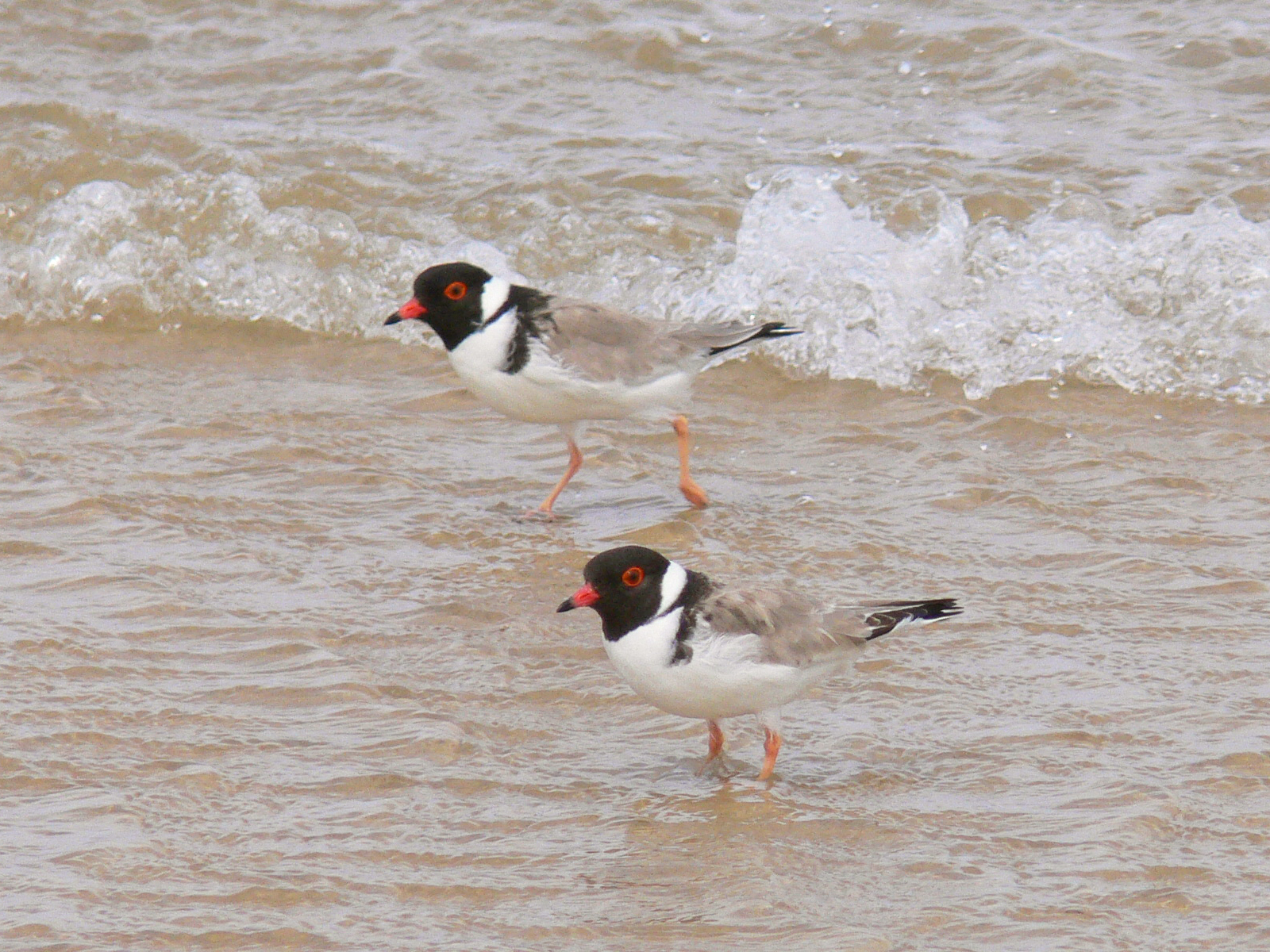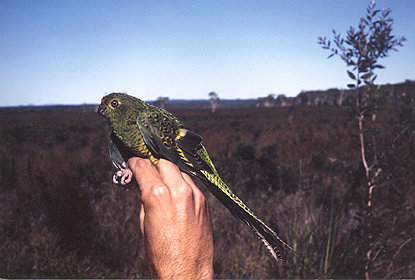|
Discovery Bay To Piccaninnie Ponds Important Bird Area
The Discovery Bay Coastal Park is a linear protected area of coastal land in western Victoria (Australia), Victoria, south-eastern Australia. The park extends along the coast of Discovery Bay (Australia), Discovery Bay from Cape Nelson State Park, Cape Nelson north-westwards for to the border with South Australia. The park was listed on Australia's now-defunct Register of the National Estate, and lies within the traditional lands of the Gunditjmara people. Part of the route of the Great South West Walk is located within the park. The Discovery Bay Marine National Park adjoins the park to the west of Cape Bridgewater, Victoria, Cape Bridgewater History After being recommended as a coastal reserve in 1973 by Victoria's Land Conservation Council, the park was first included in Schedule 3 of the Victorian National Parks Act in 1979, with an area of . Additional parcels of land were acquired in 1981, 1987 and 1997. Land within the coastal park, the Lower Glenelg National Park an ... [...More Info...] [...Related Items...] OR: [Wikipedia] [Google] [Baidu] |
Portland, Victoria
Portland is a city in Victoria, Australia, and is the oldest European settlement in the state. It is also the main urban centre in the Shire of Glenelg and is located on Portland Bay. As of the 2021 census the population was 10,016, increasing from a population of 9,712 taken at the 2016 census. History Early history The Gunditjmara, an Aboriginal Australian people, are the traditional owners of much of south-west Victoria, including what is now Portland, having lived there for thousands of years. They are today renowned for their early aquaculture development at nearby Lake Condah. Physical remains such as the weirs and fish traps are to be found in the Budj Bim heritage areas. The Gunditjmara were a settled people, living in small circular weather-proof stone huts about high, grouped as villages, often around eel traps and aquaculture ponds. On just one hectare of Allambie Farm, archaeologists have discovered the remains of 160 house sites. 19th century European settlement ... [...More Info...] [...Related Items...] OR: [Wikipedia] [Google] [Baidu] |
Glenelg Estuary And Discovery Bay Ramsar Site
Glenelg may refer to Places Australia * Glenelg, South Australia, a beachside suburb of Adelaide * Glenelg River (Victoria) * Glenelg River (Western Australia) * Glenelg County, Western Australia, a former county * Shire of Glenelg, Victoria * Shire of Glenelg (former), Victoria, abolished in 1994 * City of Glenelg, a local government area in South Australia * Electoral district of Glenelg (South Australia), a former district of the South Australian House of Assembly * Electoral district of Glenelg (Victoria), a former district of the Victorian Legislative Assembly Canada * Glenelg Parish, New Brunswick, Canada * Glenelg, Nova Scotia, Canada, a community * Glenelg, Ontario, Canada, a former township which was merged into West Grey township Elsewhere * Glenelg, Highland, Scotland, a community area and civil parish * Glenelg, Maryland, United States, an unincorporated community * Glenelg, Mars Sports * Glenelg Baseball Club, a member of the South Australian Baseball League * Glenel ... [...More Info...] [...Related Items...] OR: [Wikipedia] [Google] [Baidu] |
Australasian Bittern
The Australasian bittern (''Botaurus poiciloptilus''), also known as the brown bittern or matuku hūrepo, and also nicknamed the "bunyip bird", is a large bird in the heron family Ardeidae. A secretive bird with a distinctive booming call, it is more often heard than seen. Australasian bitterns are endangered in both Australia and New Zealand. Taxonomy German zoologist Johann Georg Wagler described the Australasian bittern in 1827. It is one of four similarly-plumaged species in the genus ''Botaurus''. Description The length is from 650 to 750 mm with adults being similar between the sexes while the male is significantly larger. The bird has a deep brown upper surface, mauled with buff on wing coverts; face and eyebrow buff, with dark brown stripe running from bill to erectile plumes at sides of neck. Under surface buff, striped with brown. The face skin is a dull green as are the legs and feet, it possesses a dark brown bill, yellow eyes, and the base of the lower mandible is gr ... [...More Info...] [...Related Items...] OR: [Wikipedia] [Google] [Baidu] |
Little Tern
The little tern (''Sternula albifrons'') is a seabird of the family Laridae. It was formerly placed into the genus ''Sterna'', which now is restricted to the large white terns. The genus name is a diminutive of ''Sterna'', "tern". The specific ''albifrons'' is from Latin ''albus'', "white", and "frons", ''forehead''. The former North American (''S. a. antillarum'') and Red Sea ''S. a. saundersi'' subspecies are now considered to be separate species, the least tern (''Sternula antillarum'') and Saunders's tern (''Sternula saundersi''). This bird breeds on the coasts and inland waterways of temperate and tropical Europe and Asia. It is strongly migratory, wintering in the subtropical and tropical oceans as far south as South Africa and Australia. There are three subspecies, the nominate ''albifrons'' occurring in Europe to North Africa and western Asia; ''guineae'' of western and central Africa; and ''sinensis'' of East Asia (SE Russia to Japan, SE Asia, Philippines) and the nort ... [...More Info...] [...Related Items...] OR: [Wikipedia] [Google] [Baidu] |
Hooded Plover
The hooded dotterel or hooded plover (''Thinornis cucullatus'') is a species of bird in the family Charadriidae. It is endemic to southern Australia, where it inhabits ocean beaches and subcoastal lagoons. There are two recognised subspecies which form isolated eastern and western populations. The eastern subspecies is of greater conservation concern, with listings varying from Vulnerable in South Australia and Victoria to Critically Endangered in New South Wales. Taxonomy The hooded dotterel was placed in genus ''Charadrius'' but in the early 2000s it was reclassified into the genus ''Thinornis'', along with shore plover (''Thinornis novaeseelandiae''). In 2000 the number of mature individuals was estimated at 7,000. Alternative common names include: hooded plover, hoody, ''pluvier à camail'' (in French), ''kappenregenpfeifer'' (in German), and ''chorlito encapuchado'' (in Spanish). Subspecies Two subspecies of the hooded dotterel are now recognised. * ''T. c. cucullatus'' (V ... [...More Info...] [...Related Items...] OR: [Wikipedia] [Google] [Baidu] |
Threatened
Threatened species are any species (including animals, plants and fungi) which are vulnerable to endangerment in the near future. Species that are threatened are sometimes characterised by the population dynamics measure of ''critical depensation'', a mathematical measure of biomass related to population growth rate. This quantitative metric is one method of evaluating the degree of endangerment. IUCN definition The International Union for Conservation of Nature (IUCN) is the foremost authority on threatened species, and treats threatened species not as a single category, but as a group of three categories, depending on the degree to which they are threatened: *Vulnerable species *Endangered species * Critically endangered species Less-than-threatened categories are near threatened, least concern, and the no longer assigned category of conservation dependent. Species which have not been evaluated (NE), or do not have sufficient data (data deficient) also are not considered "t ... [...More Info...] [...Related Items...] OR: [Wikipedia] [Google] [Baidu] |
BirdLife International
BirdLife International is a global partnership of non-governmental organizations that strives to conserve birds and their habitats. BirdLife International's priorities include preventing extinction of bird species, identifying and safeguarding important sites for birds, maintaining and restoring key bird habitats, and empowering conservationists worldwide. It has a membership of more than 2.5 million people across 116 country partner organizations, including the Royal Society for the Protection of Birds, the Wild Bird Society of Japan, the National Audubon Society and American Bird Conservancy. BirdLife International has identified 13,000 Important Bird and Biodiversity Areas and is the official International Union for Conservation of Nature’s Red List authority for birds. As of 2015, BirdLife International has established that 1,375 bird species (13% of the total) are threatened with extinction ( critically endangered, endangered or vulnerable). BirdLife International p ... [...More Info...] [...Related Items...] OR: [Wikipedia] [Google] [Baidu] |
Hemiphlebia Mirabilis
''Hemiphlebia mirabilis'', commonly known as the ancient greenling, is a species of damselfly, the only living species of the genus ''Hemiphlebia'' and the family Hemiphlebiidae. It is very small with a long, metallic-green body and clear wings. It is endemic to south-eastern Australia. Its natural swamp habitat is threatened by habitat loss. The oldest representatives of the family date to the Late Jurassic. Distribution and habitat The ancient greenling has been recorded from a small number of scattered sites, including on King Island and in Mount William, Tasmania; in Wilsons Promontory National Park and near Yea, Victoria; and in Piccaninnie Ponds Conservation Park in south-eastern South Australia. Its recorded habitat includes permanent freshwater ponds, riverine lagoons and swamps that may dry out seasonally. A favoured site discovered in 2008, Long Swamp in the Discovery Bay Coastal Park of south-western Victoria, contains extensive areas of twig-rush (''Baumea'' s ... [...More Info...] [...Related Items...] OR: [Wikipedia] [Google] [Baidu] |
Damselfly
Damselflies are flying insects of the suborder Zygoptera in the order Odonata. They are similar to dragonflies, which constitute the other odonatan suborder, Anisoptera, but are smaller and have slimmer bodies. Most species fold the wings along the body when at rest, unlike dragonflies which hold the wings flat and away from the body. An ancient group, damselflies have existed since at least the Lower Permian, and are found on every continent except Antarctica. All damselflies are predatory insects; both nymphs and adults actively hunt and eat other insects. The nymphs are aquatic, with different species living in a variety of freshwater habitats including acidic bogs, ponds, lakes and rivers. The nymphs moult repeatedly, at the last moult climbing out of the water to undergo metamorphosis. The skin splits down the back, they emerge and inflate their wings and abdomen to gain their adult form. Their presence on a body of water indicates that it is relatively unpolluted, but the ... [...More Info...] [...Related Items...] OR: [Wikipedia] [Google] [Baidu] |
Endangered
An endangered species is a species that is very likely to become extinct in the near future, either worldwide or in a particular political jurisdiction. Endangered species may be at risk due to factors such as habitat loss, poaching and invasive species. The International Union for Conservation of Nature (IUCN) Red List lists the global conservation status of many species, and various other agencies assess the status of species within particular areas. Many nations have laws that protect conservation-reliant species which, for example, forbid hunting, restrict land development, or create protected areas. Some endangered species are the target of extensive conservation efforts such as captive breeding and habitat restoration. Human activity is a significant cause in causing some species to become endangered. Conservation status The conservation status of a species indicates the likelihood that it will become extinct. Multiple factors are considered when assessing the s ... [...More Info...] [...Related Items...] OR: [Wikipedia] [Google] [Baidu] |
Leptospermum Lanigerum
''Leptospermum lanigerum'', commonly known as the woolly teatree, is a small tree or medium shrub from the plant family ''Myrtaceae''. Its common name derives from the conspicuously hairy capsules produced as fruit, along with the fine, silky hairs present on branches and leaves. ''L. lanigerum'' is widespread in many habitats, particularly in waterlogged areas such as moist, sandy coastal heaths, on river banks, riparian scrub, woodlands and on the fringe of montane grasslands. This species is endemic to Australia, with native populations occurring in New South Wales, South Australia, Tasmania and Victoria. Flowers possess the typical characteristics present within the genus ''Leptospermum''; five free, white petals, many stamens and five small sepals; although the most distinctive feature is the persistent hairy capsules and the silvery appearance of mature foliage. ''L. lanigerum'' is common and widespread throughout Australia, occurring both as natural populations and culti ... [...More Info...] [...Related Items...] OR: [Wikipedia] [Google] [Baidu] |
Ground Parrot
The genus ''Pezoporus'' contains three Australian species: the night parrot (''Pezoporus occidentalis'') and the cryptic ground parrots, the eastern ground parrot (''Pezoporus wallicus'') and the western ground parrot (''Pezoporus flaviventris''). The night parrot was previously separated in a distinct genus, ''Geopsittacus''. The genus is part of the tribe Pezoporini The tribe Pezoporini is the sister clade of the tribe Platycercini that contains the broad-tailed parrots. Taxonomy The inclusion of the following taxon is based on the paper by Joseph ''et al.'' (2012). * Genus ''Neophema'' ** Blue-winged parr .... Species list *Genus ''Pezoporus'' References Bird genera Broad-tailed parrots {{parrot-stub ... [...More Info...] [...Related Items...] OR: [Wikipedia] [Google] [Baidu] |

_(cropped).jpg)





